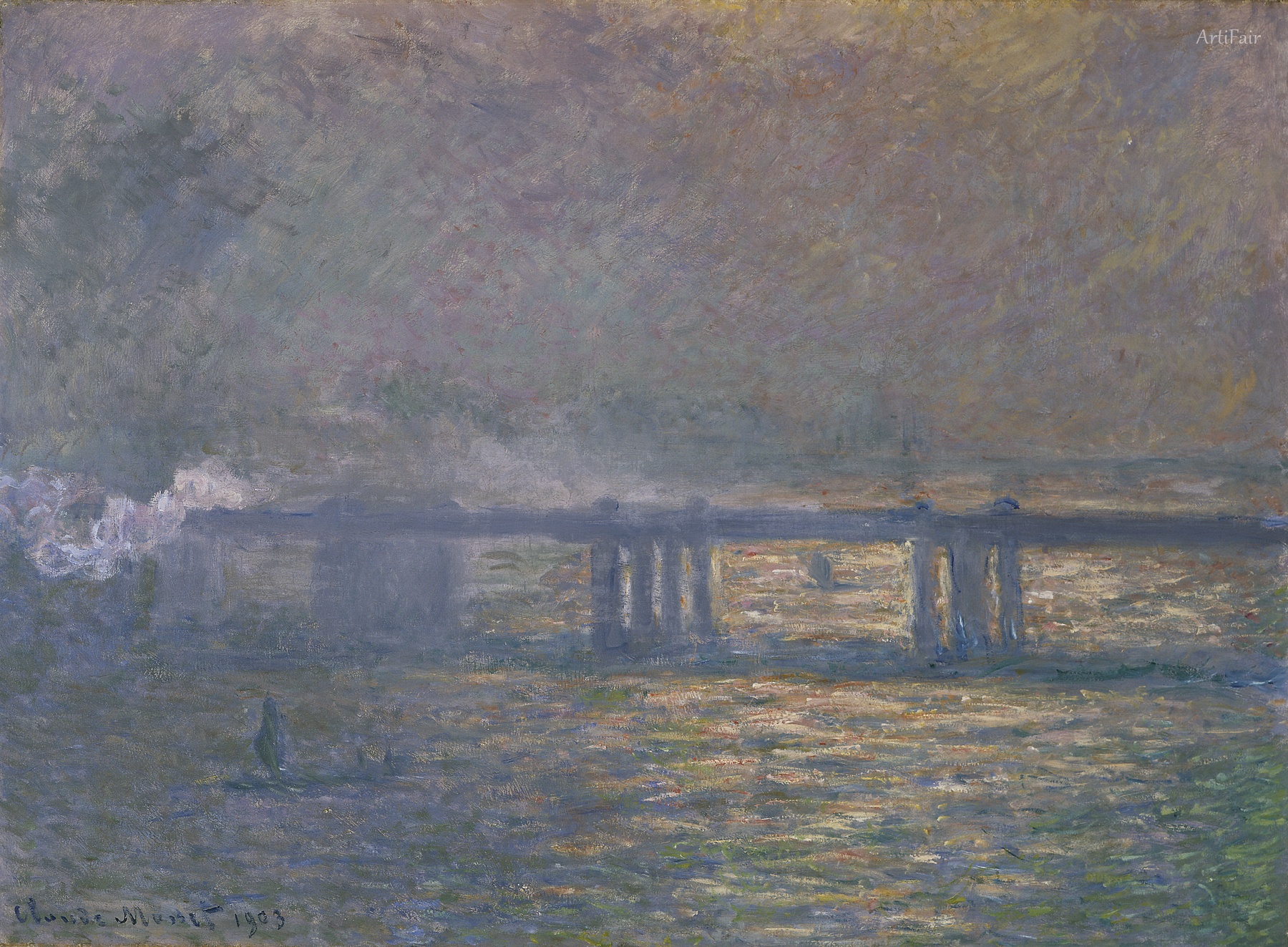
Art Appreciation
The painting captures a tranquil moment on the Thames, portraying the iconic Charing Cross Bridge enveloped in the soft embrace of twilight. Monet’s brushwork dances lightly across the canvas, suggesting the shimmer of water as it reflects a delicate interplay of colors. The bridge, though somewhat ghostly and ethereal, stands firmly as a symbol of connection, its arches appearing almost as silhouettes against the luminous backdrop. A boat glides gently beneath the bridge—an invitation to drift along with the scene. As I observe, I can almost hear the murmur of the water and the distant sounds of the city; it's as if the world is holding its breath for just a moment.
In terms of technique, Monet’s impressionistic approach allows for a sense of fluidity, the brushstrokes almost trembling with the vitality of the scene. The palette is rich yet subdued, dominated by silvery blues and gentle golds that blend harmoniously. This color scheme evokes a sense of calm and introspection—a feeling that transcends time, inviting the viewer to relish in a fleeting yet poignant experience. Historically, this painting emerged during the late 19th to early 20th century, a time of great change and movement in Britain. Monet's ability to capture the essence of a moment in such vivid detail speaks volumes about his mastery, marking a significant position in the evolution of modern art.